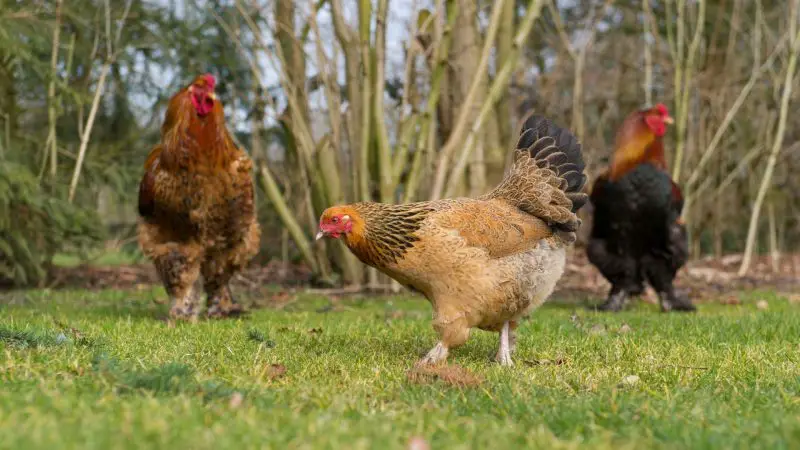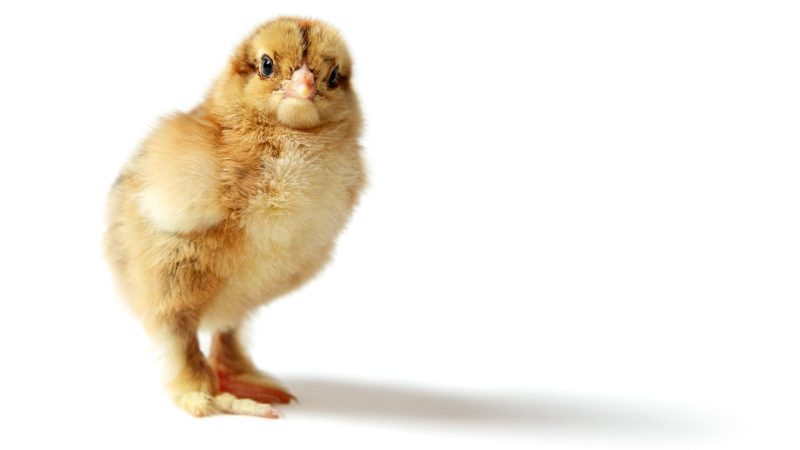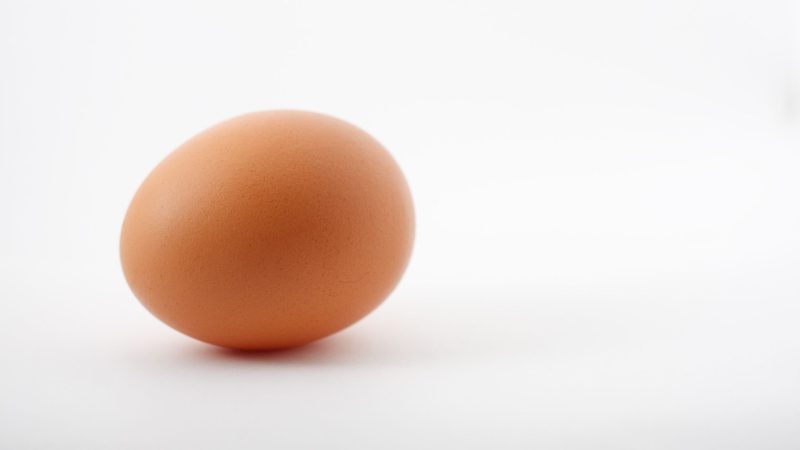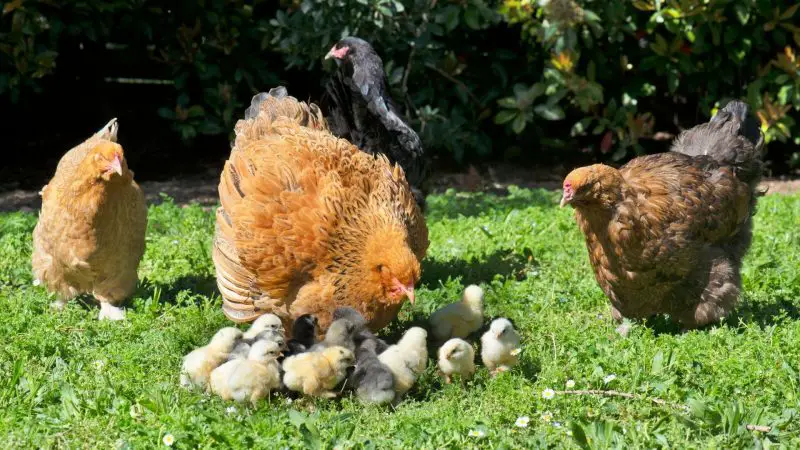There’s no shortage of chicken breeds to learn about if you’re a chicken breeder. One breed that’s worth learning more about is the Brahma chicken variant.
What is a Brahma chicken? Brahma chickens are a large breed with gentle dispositions that can be bred for meat or eggs or as show chickens. They’ll thrive in both hot and cold climates and do well in free-range spaces. Brahma chickens come in three variants; light, dark, and buff.
This article explores everything you need to know about Brahma chickens, including their history, ideal living, and breeding conditions. Keep reading to the end for recommendations for the best coops to buy for this breed.
What Is a Brahma Chicken?

A Brahma chicken is a large chicken with a pleasing physical appearance that makes an extraordinary show chicken. They can be used for breeding and meat. Brahma hens take to brooding well and can lay 3 – 4 eggs a week. If you want to breed them for meat, you can use them as roasters or capons.
Brahma chickens are raised across the world, including in the USA and the UK.
History of Brahma Chickens
Brahma chickens were originally Chinese breeds that were brought to the USA in the mid-1900s. After they were brought to the USA, they were crossbred and, as a result, became bigger than their traditional varieties. While they have their origins in China, Brahma chickens are named after India’s Brahmaputra River, possibly because some breeders believed they were imported from India.
However, George Pickering Burnham, an American poultry expert in the 1900s, explains that this is an incorrect assumption, proving that present-day Brahmas result from crossbreeds between Chinese and American chicken breeds.
Physical Appearance
Brahma chickens are large and squat with short legs. They can be light, buff, or dark in color. Their neck and tail feathers are typically darker than the rest of their body. They have feathered shanks and toes and red wattles.
Light Brahma chickens are larger and heavier than dark and buff Brahma chickens. Light Brahma cocks weigh 12 pounds (5.4 kg), while dark and buff Brahma chickens weigh 11 pounds (5 kg). Meanwhile, light Brahma hens weigh 9 ½ pounds (4.3 kg), while their dark and buff counterparts weigh 8 ½ pounds (3.8 kg).
Brahma chickens have a pleasant and friendly appearance and can be found on country estates to add color and charm to the environment.
Climate and Environment Preferences
Brahma chickens thrive in most climates. However, thanks to their feathered feet, they do better in cold climates than many other chicken breeds. As they’re large birds, Brahma chickens prefer large environments where they have room to roam.
What Do Light Brahma Chicks Look Like?

Light Brahma chicks may have dark feathering, which will fade to a lighter color as they grow older. Upon hatching, Brahma chicks have feathered toes and feet; you’ll be able to identify them as light Brahma chicks by their light wing tips and yellow underbelly.
How Big Are Brahma Chicken Eggs?

Brahma chickens produce medium to large eggs. However, they’re only fair producers of eggs and may only lay 3-4 eggs a week. The eggs are typically light to medium brown. If you’re looking for a chicken to produce many eggs, you may want to consider another breed.
Breeding Brahma Chickens

If you plan to breed Brahma chickens, whether to sell for meat, get eggs, or as show chickens, here’s what you should know about feeding them and the advantages and disadvantages of breeding Brahma chickens, in general:
What to Feed Brahma Chickens?
Brahma chicks and Brahma chickens can eat the same type of feed as other chickens, which is advantageous if you keep other chickens’ breeds. It’s essential to provide your Brahma chickens with the suitable feed for the growth stage they’re at; consult with a local breeder or supply store for more advice.
In general, there are four different types of feed for Brahma chickens:
- Starter feed. This is protein-rich that has been specially formulated for chicks. As well as protein, which promotes body growth, it also has a lot of calcium which supports bone growth.
- Finisher feed. This feed is given to Brahma chickens a few weeks before they’re sold for meat. They contain protein as well as other nutrients which sustain life.
- Laying/breeding feed. Laying feed is given to hens who are being used to produce eggs. It’s a calcium-rich feed that will help the hen lay nutrient-rich eggs with strong shells. As a result, the eggs can be used for hatching or to eat.
- Medicinal feed. Vets may recommend medicinal feed when your Brahma chickens have minor ailments. Ensure that you have been given a prescription to give your Brahma chickens medicinal feed. If you have several chickens, you should also ensure that only the chicken that needs the medicine is eating the food.
Advantages of Breeding Brahma Chickens
- Adaptability. While Brahma chickens do best in open spaces, they can tolerate more enclosed spaces. In addition, they can handle a wide range of weather conditions.
- Nature. Brahma chickens have a gentle, easy-going nature, making them easy to handle when gathering eggs or moving them through different spaces.
Disadvantages of Breeding Brahma Chickens
- Growth rate. Brahma chickens can take almost two years to reach their full size. If you’re breeding them for meat or laying eggs, you will spend a significant amount of time rearing them.
- Egg-laying capacity. While Brahma chickens do lay eggs, other breeds will lay more eggs a week. If you’re focused on egg harvesting, you should consider another breed.
Best Coops for Brahma Chickens
If you don’t have a free-range area to keep your chicken in, you can select a large chicken coop with a built-in run area and a nesting box. You can find these and other great chicken coops on Amazon.
Best Choice Products Chicken Coop
This wooden, multi-level coop houses between 2-4 Brahma chickens, depending on their size and color. Here are some of the notable features of the Best Choice chicken coop:
- Durable and sturdy. This coop is constructed with all-natural, durable materials that hold up well under rain and wind.
- Easily accessible nesting box. This chicken coop has a nesting box at the top level. It can be kept open or closed depending on your chicken’s needs. It’s easy to open the lid and remove the eggs when needed.
- Easy to maintain. The coop is easy to assemble and clean as you can slide out different sections, clean them and replace them without disturbing the coop’s structure.
Esright Chicken Coop
This is a backyard coop with several levels of access that provides indoor and outdoor areas for your Brahma chickens to explore. Here are some of the stand out features of this chicken coop:
- Large and sheltered. This chicken coop is large with dimensions 88 inches long, 55 inches wide, and 34 inches high (2.2 meters long, 1.4 meters wide, and 0.9 meters high). It can house 4 Brahma chickens and has a netted open area space which offers chickens space to run but also protects them. It also has an enclosed area for nesting and night.
- Easy to assemble. If you’re ordering it online, this chicken coop comes with easy assembling instructions that allow you to dismantle different areas for cleaning.
- Nesting box. This coop has its own designated nesting box with a slide-off box that allows you to take the eggs out of the box easily.
Related: What Kind of Chicken Do I Have? | Chicken Breeds
List of Sources
Poultry Breeds – Brahma Chickens
